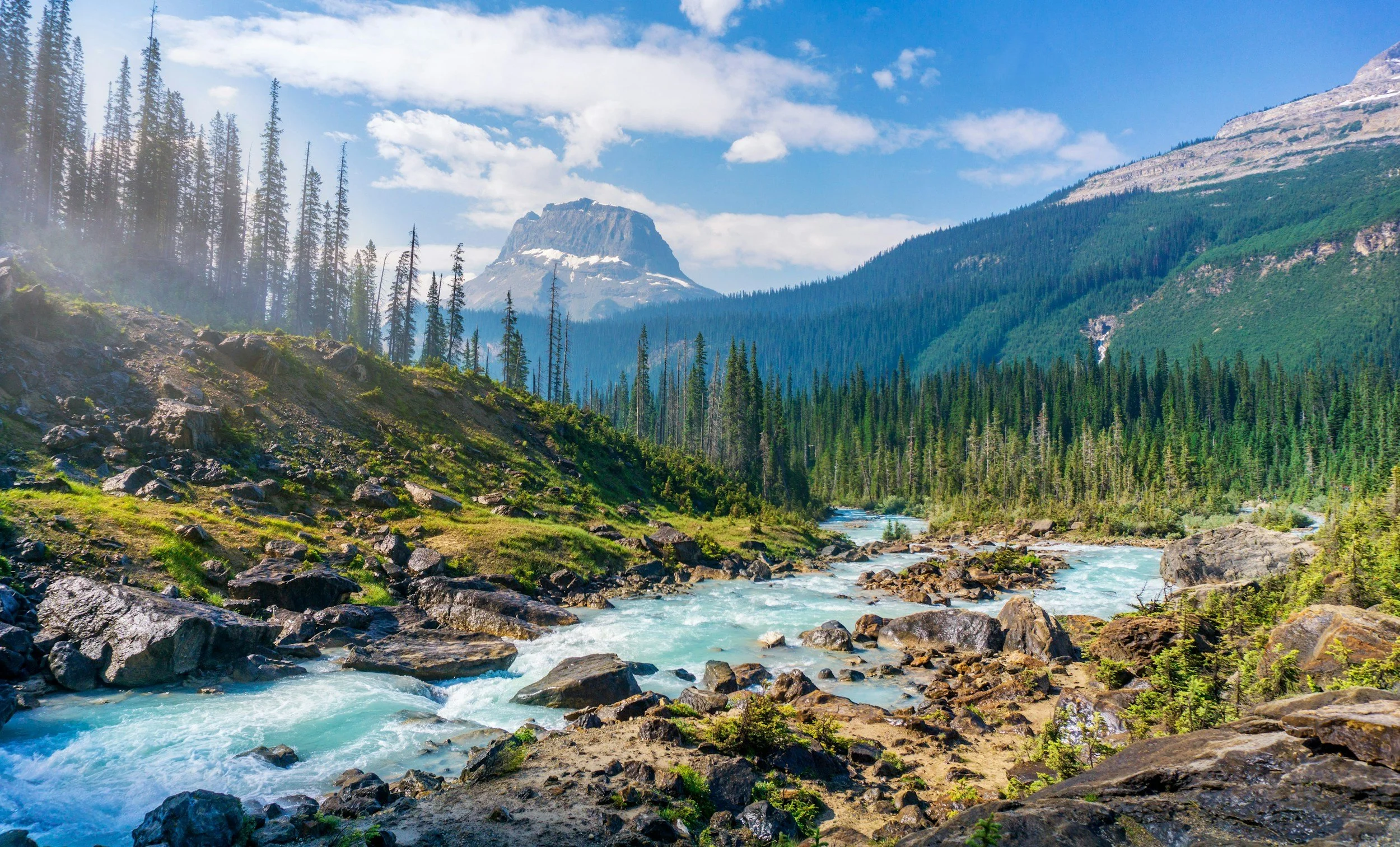Sort By Category
- 30x30
- Administration
- Antiquities Act
- Book Reviews
- Bureau of Land Management
- Climate Change
- Climate change
- Coasts
- Congress
- Counties & Federal Lands
- Courts
- Courts & Litigation
- Department of Agriculture
- Department of Interior
- Deserts
- Ecological Reserves
- Ecosystems
- Elections
- Endangered Species
- Energy
- Estuaries
- Federal Lands
- Fish
- Fish and Wildlife Service
- Forest Fires
- Forest Service
- Forestry
- Forests
- Grasslands
- Land & Water Cons. Fund
- Land & Water Conservation Fund
- Legislation
- Litigation
- Livestock Grazing
- Marine Protected Areas
- Marine Sanctuaries
- Mature & Old-Growth Forests
- Mining
- Nat'l Conservation Lands
- National Forest System
- National Marine Sanctuaries
- National Monuments
- National Monuments Act
- National Park Service
- National Park System
- National Parks
- National Recreation Area
- National Scenic Area
- National Trails System
- National Wildlife Refuges
Sort By Tag
- 1002 area
- 30x30
- 5th Amendment
- ANWR
- Acadia National Park
- Adam Smith
- Administrative Procedure Act
- Advancing Conservation and Education Act
- Alan Bates
- Alan Deboer
- Alaska
- Alaska National Interest Lands Act
- Alaska Native Claims Settlement Act
- Aldo Leopold
- American Forest Resource Council
- American Prairie Reserve
- American Tree Farm System
- American beef supply
- American black duck
- American woodcock
- Ammon Bundy
- Ancient Forest National Park
- Anders Eskil Carlson
- Andrea Salinas
- Andy Kerr
- Animal unit month
- Ansel Adams
- Antiquities Act
- Applegate Primitive Backcountry Area
- Aqua Fria National Monument
- Aquatic Conservation Strategy
- Aquatic Conservation and Riparian Strategy
- Arches National Monument
- Arches National Park
- Arctic National Wildlife Refuge
- Areas of Critical Environmental Concern
- Army Corps of Engineers
- Association of O&C Counties
- Astoria Canyon
- Astoria Fan
- Atlantic Coast
- Augusta Canal NHA
- Avarna Group
- Avi Kaw Ame
- BLM Conservation Rule
- BLM Zone 3 Lands
- BOEM Oregon Planning Area
- Baboquivari Peak Wilderness
- Baker County
- Bald Mountain Road
A Solution to Corridor Collisions: A National Wildlife Corridors System
Just as it is in the public interest to have systems of corridors for the movement of vehicles, oil, gas, electrons, and water, it is in the public interest to have a system of corridors for wildlife. Wildlife corridors are for mammals large and small that must walk to where they need to go.
Many National Parks Arose From National Monuments
Pinnacles is the nation’s fifty-ninth full-fledged national park. Twenty-five of our fifty-nine national parks, totaling 39.6 million acres, were first seeded by the establishment of a presidentially proclaimed national monument. Fourteen of these monumental twenty-five were established from more than one national monument proclamation, in that national monuments were expanded by later presidents.
The Columbia River Gorge Is Dead; Long Live the Columbia River Gorge—Unless Greg Walden Has His Way
Part 1: It’s a Beautiful, Natural, and Necessary Thing That Nature Changes
Everyone—including many a card-carrying conservationist—just needs to take a deep breath. Yes, there was a relatively large forest fire mostly on the Oregon side of the Columbia River Gorge. However, the clearing of the smoke gave proof through the day that our gorge was still there.
Now That’s a Member of Congress!
In addition to the usual (and vital) proposed additions to the National Wilderness Preservation System and the National Wild and Scenic Rivers System, Huffman’s draft legislation proposes several innovative and novel congressional designations that call for ecological restoration, nature conservation, and/or increased recreation.
The Westerman Bill: The Timber Industry’s Wet Dream
Logging in Lane County, Oregon on both public and private lands.
The Westerman bill would legislate horrifically harmful public forest policy into law. Among its many sins, the Westerman bill would
Numerous No-Take Marine Protected Areas Are Best for Commercial Fishing
As marine national monuments go, the Northeast Canyons and Seamounts (NEC&S) Marine National Monument proclaimed by President Obama in 2016 is rather puny. Yes, it’s comparable to the size of Connecticut, but Connecticut, after all, is the forty-eighth largest state. President Obama generally went big with marine national monuments before he went home, but not in this case. Why not?
The National Marine Sanctuary System, Actual and Potential
Congress has not reauthorized or amended the NMSA since 2000. Now would not be a good time to try. Recent history, under both a Republican and a Democratic president, has shown that serious large-scale ocean conservation occurs only with the use of the Antiquities Act.
The Coastal Barrier Resources System
The Coastal Barrier Resources Act of 1982 (CBRA) was signed into law by President Ronald Reagan, not known for being a flaming conservationist. Reagan may not have loved nature as much as he hated government bailouts—especially repeated government bailouts—but in the case of undeveloped areas along our coasts, the conservation of both nature and the federal treasury aligned.
Federal Systems for the Conservation and Enjoyment of Lands and Waters
Over the course of more than a century, Congress—or the executive branch using expressed authorities granted by Congress—has established various systems for the conservation, management, and enjoyment of federal and other lands and waters. On the whole, these systems are bold, visionary, and remarkable.
A Monumental Battle, Part 2: National Monuments in the Congress
There is no question that an Act of Congress can eliminate, shrink, or weaken a national monument proclaimed by a president pursuant to authority granted by Congress. What Congress giveth, Congress can taketh away.
The National Wildlife Refuge System, Part 3: Time to Double Down
During this Trumpian Quadrennium, with a Congress hostile to conservation, the chances of expanding the National Wildlife Refuge System (NWRS) approach zero. Yet the need to double the size of the system has never been greater, so now is the time to start.
The National Wildlife Refuge System, Part 2: Historical Evolution and Current Challenges
The purposes and boundaries of Oregon’s Malheur National Wildlife Refuge can only be divined by examining at least a dozen acts of Congress, presidential actions, and administrative decisions.
The National Wildlife Refuge System, Part 1: An Overview
Pelican Island in the Indian River Lagoon in Florida was the home to an extraordinary number of native birds, many of which were threatened by plume hunters meeting the hot market for feathers (and even whole birds) for women’s hats.
A Congressional Conservation Agenda for the Twenty-First Century
Though we’ve burned through one-sixth of the current century, Congress has yet to enact any sweeping and bold public lands conservation legislation in the new millennium. There’s still time though, and a crying need.
Moving On After Malheur
The American system of justice may be the best in the world, but it’s not perfect. In the matter of seven defendants who—by force of arms—illegally occupied and caused damage to the Malheur National Wildlife Refuge in southeastern Oregon, justice was not served. A view of the Steens Mountains from the Buena Vista Overlook located in the Malheur National Wildlife Refuge. Image source: Wikipedia
A Public Lands Conservation Agenda for the New President
The climate, the oceans, species, watersheds, ecosystems, landscapes, cultures, and economies that depend on federal public lands all depend upon the 45th president of the United States having a bold public lands conservation agenda.
A National Desert and Grassland System
Even today, one can drive across the American West and view literally millions of acres of federal public lands under the jurisdiction of the Bureau of Land Management (BLM) without even knowing it
Public Lands in the United States
The Merriam-Webster definition of “public land” encapsulates the broadest and the narrowest definitions: “land owned by a government; specifically: that part of the United States public domain subject to sale or disposal under the homestead laws.”
Why Public Lands
The national park idea, the best idea we ever had, was inevitable as soon as Americans learned to confront the wild continent not with fear and cupidity but with delight, wonder, and awe. Image by: Hendrik Cornelissen @the_bracketeer


















